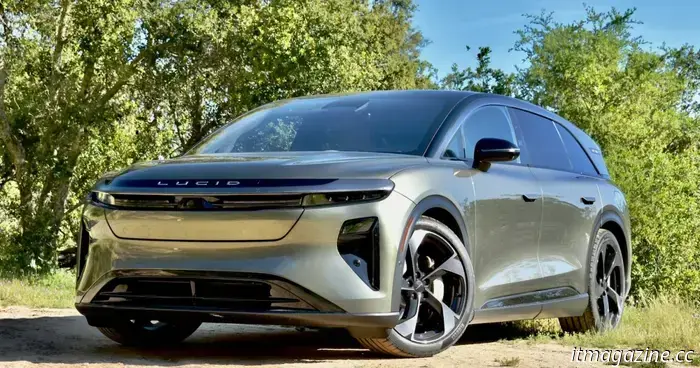
Manjaro Linux 25.0 has been released and the alpha release of Manjaro Summit has been presented.
On April 15, 2025, the developers announced the release of a new release of Manjaro Linux 25.0, and also presented the first alpha version of the experimental edition of Manjaro Summit.
Manjaro 25.0, dubbed Zetar, is especially suitable for beginners, as it offers a simple installation process, automatic hardware detection and installation of the necessary drivers.
The distribution is released with GNOME, KDE Plasma and Xfce graphical environments, and also supports alternative versions with Budgie, Cinnamon, Deepin, LXQt and i3, which are created by the community.
In the new version, the GNOME edition has been updated to version 48. Among the main innovations are HDR support, triple buffering, grouping notifications into stacks, as well as a new power—saving feature that limits battery power to 80% when connected to a network. GNOME 48 has also received notable improvements in performance and settings.
The KDE-based edition now runs on Plasma 6.3 with updated Frameworks 6.12 and KDE Gear 24.12. In this version, fractional scaling has been improved, screen colors have become more accurate, and System Monitor now monitors processor usage more accurately and itself has become less demanding of resources. New options have also been added for configuring dashboards, automatically disabling the touchpad when typing, and randomly generating a password when creating an access point.
The Thunar file manager now has the ability to set colors for individual files, a recursive search has been added, and the panel is now more precisely configured — the length is set in pixels. The Control Center has become more convenient and combines system settings in one window, expanding the possibilities of managing appearance, multi-monitor operation and context menus.
Linux 6.14 is used as the default kernel. Versions 6.1 LTS and 6.6 LTS are available for compatibility with older hardware.
What is the Manjaro Summit?
Along with the main release, a new experimental edition of Manjaro Summit is presented. This is a system with a monolithic image that is updated entirely and operates in read-only mode. Currently, an alpha version with a 2 GB GNOME environment is available for the x86_64 architecture with mandatory UEFI support.
The system image is generated based on the Arch Linux package database using the arkdep tool written in Bash. All updates are installed atomically by uploading a new image to a separate partition of the Btrfs file system. If something goes wrong, the system automatically rolls back to its last working state. New versions are released once a week.
Additional programs can be installed via Flatpak or as separate layers. Working with containers is also supported thanks to the Distrobox tool and the BoxBuddy graphical shell. If necessary, you can disable restrictions on changing system files and use the usual package manager, but such changes will be reset after the next update.
Meanwhile, Microsoft is offering its users to upgrade to Windows 11. Many older computers, especially those released before 2018, are not suitable for the new version of the system. Because of this, users of such devices are forced to either buy a new computer or continue using an outdated system, risking security.
Other articles
 Nvidia has an unexpected pricing announcement for the RTX 5060 Ti and RTX 5060.
It's official: Nvidia has announced three new GPUs, with some set to rival the top graphics cards in the mainstream market. Additionally, new laptops are also on the way. Nvidia's announcement provides details on what to anticipate from the new RTX 50-series lineup. Team Green is maintaining the pricing […]
Nvidia has an unexpected pricing announcement for the RTX 5060 Ti and RTX 5060.
It's official: Nvidia has announced three new GPUs, with some set to rival the top graphics cards in the mainstream market. Additionally, new laptops are also on the way. Nvidia's announcement provides details on what to anticipate from the new RTX 50-series lineup. Team Green is maintaining the pricing […]
 Lucid Gravity propels electric SUVs into a new realm.
Lucid utilizes its outstanding engineering to create a high-end family SUV.
Lucid Gravity propels electric SUVs into a new realm.
Lucid utilizes its outstanding engineering to create a high-end family SUV.
 OnePlus' upcoming phone is a small yet powerful device, and it will be released shortly.
After the introduction of the OnePlus 13 in January, the next device we can expect from the well-known subsidiary of Oppo is the OnePlus 13T. The official unveiling of this phone is scheduled for April 24, so we won't have to wait much longer. However, there is a small twist: the launch is taking […]
OnePlus' upcoming phone is a small yet powerful device, and it will be released shortly.
After the introduction of the OnePlus 13 in January, the next device we can expect from the well-known subsidiary of Oppo is the OnePlus 13T. The official unveiling of this phone is scheduled for April 24, so we won't have to wait much longer. However, there is a small twist: the launch is taking […]
 NYT Crossword: solutions for Tuesday, April 15
The crossword puzzle in The New York Times can be challenging, even if it's not the Sunday edition! If you're facing difficulties, we're available to assist you with today’s clues and solutions.
NYT Crossword: solutions for Tuesday, April 15
The crossword puzzle in The New York Times can be challenging, even if it's not the Sunday edition! If you're facing difficulties, we're available to assist you with today’s clues and solutions.
 NYT Connections: clues and solutions for Tuesday, April 15.
Connections is the latest puzzle game from the New York Times, and it can be pretty challenging. If you require assistance in solving today's puzzle, we're here to support you.
NYT Connections: clues and solutions for Tuesday, April 15.
Connections is the latest puzzle game from the New York Times, and it can be pretty challenging. If you require assistance in solving today's puzzle, we're here to support you.
 NYT Strands for today: clues, spangram, and solutions for Tuesday, April 15.
Strands offers a challenging twist on the traditional word search from NYT Games. If you're having difficulty and can't figure out today's puzzle, we've got assistance and clues for you right here.
NYT Strands for today: clues, spangram, and solutions for Tuesday, April 15.
Strands offers a challenging twist on the traditional word search from NYT Games. If you're having difficulty and can't figure out today's puzzle, we've got assistance and clues for you right here.
Manjaro Linux 25.0 has been released and the alpha release of Manjaro Summit has been presented.
On April 15, 2025, the developers announced the release of a new release of Manjaro Linux 25.0, and also presented the first alpha version of the experimental edition of Manjaro Summit.
